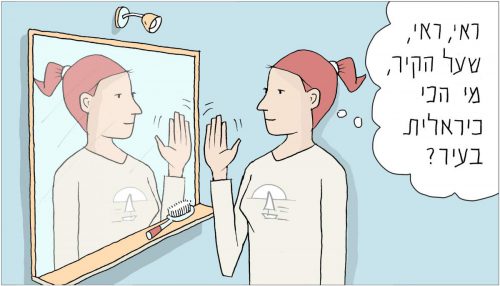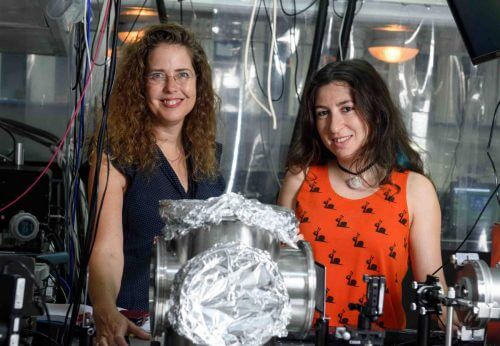How many rotations of the polarized laser light are required to diagnose a molecule as having a left- or right-handed structure? Or, what part of one turn (section)? Half a turn? Quarter? tenth? How many circles? Less than that?

One way to examine the chiral directionality of molecules is based on the projection of polarized (and rotating) light onto the molecule. It turns out that a molecule with a right-handed structure absorbs the polarized light at a slightly different rate compared to the rate of absorption of its "sister" which has a left-handed structure. A more sensitive measurement measures the amount of electrons emitted from a molecule when it is ionized, in the direction of light propagation. When a chiral molecule absorbs circularly polarized light, the number of electrons emitted in this direction is slightly different in a right-handed molecule compared to a left-handed molecule. Counting these emitted electrons - and comparing the quantities - can, therefore, be used to diagnose the spatial structure of the molecules being examined and identify their chiral directionality. This way examines the reaction of chiral molecules in long periods of time.
But how deeply embedded is the phenomenon of chirality in molecules (that is, what is the shortest reaction time between light and matter, which is sufficient to measure chirality)? Or, in other words, how many rotations of the polarized laser light are required to diagnose a molecule as having a left- or right-handed structure? Or, what part of one turn (section)? Half a turn? Quarter? tenth? How many circles? Less than that?

Prof. Nirit Dudovitz and members of her group in the Department of Physics of Complex Systems, at the Weizmann Institute of Science, in collaboration with the research group of Valerie Blanchet and Jan Mayers from the University of Bordeaux, in France, found an original way - albeit technologically complex - that would allow them to answer this question. If you want to test a faster response, you have to test it with a faster method. That is, an unequivocal result must be reached through a narrower - and shorter, or faster - section of the circularly polarized light that is sent to "probe" the structure of the molecule.
To enable measurement of the directionality of the molecule being examined using minimal cutoff limits, the scientists created a combination between two laser beams polarized in different directions and at different wavelengths (colors). The result of the polarization in the different directions, the color differences and the speed of the flash, created - instead of the rotating light pattern - a sort of polarization pattern similar to the number 8. When this light pattern is projected onto material samples, the lobes "flip over" and the direction of light rotation changes at a very high speed, measured in several tens of atto -seconds (an atto-second is a billionth of a billionth of a second). As a result of the light irradiation, the molecules of the tested substance are ionized; But as a result of the rapid and repeated alternation of the "lobes" of the rotating polarized light (having the figure-8-like pattern), the reaction of the emission directions of the electrons from the ionizing molecules changes. In other words, the scientists created a kind of fast light switch, which serves as a measure of chirality. The experiment showed for the first time that it is possible to diagnose the phenomenon of chirality in time periods of tens to hundreds of attoseconds, thereby measuring for the first time the times when chirality can be measured.

One response
What is?
Is it possible in one sentence?